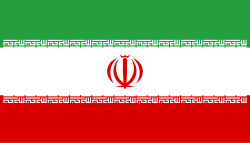Jalil Zandi
| Jalil Zandi | |
 | |
| Information | |
|---|---|
| Begravningsplats | Behesht-e Zahra |
| I tjänst för | |
| Tjänstetid | 1969–2001 |
| Grad | Brigadgeneral |
| Utmärkelser | Fath (Silver) |
| Övrigt | 11 luftsegrar |
Jalil Zandilyssna , född 2 maj 1951 i Garmsar, död 1 april 2001 i Teheran, var en iransk stridspilot under Iran–Irak-kriget. Han var ett flygaräss, som tjänade under hela Iran–Irak-kriget. Han anses som den mest framgångsrika piloten i konflikten och utnämndes till brigadgeneral.[1][2][3]
Hans stora berömmelse kom som F-14 Tomcat-pilot. Han sköt ner 11 irakiska flygplan (8 bekräftade nedskjutningar[4][5][6]och 3 sannolika nedskjutningar).[7] De nedskjutna planen var 4 MiG-23, 2 Su-22, 2 MiG-21 och 3 Mirage F1. Detta gör honom till den mest framgångsrika F-14 Tomcat-pilot någonsin.[8]
Han omkom med sin fru Zahra Mohebshahedin i en bilolycka 2001 nära Teheran. Han är begravd på Behesht-e-Zahra kyrkogården i södra Teheran. Han fick tre söner.
Se även
- Iranska luftsegrar under Iran-Irak-kriget
Källor
- ^ Imperial Iranian Air Force: Samurai in the skies
- ^ Fire in the Hills: Iranian and Iraqi Battles of Autumn 1982, by Tom Cooper & Farzad Bishop, Sept. 9, 2003
- ^ Iranian F-14 Tomcat Units in Combat by Tom Cooper & Farzad Bishop, 2004, Oxford: Osprey Publishing, p. 79, ISBN 1 84176 787 5
- ^ http://www.acig.org/artman/publish/article_210.shtml
- ^ http://www.acig.org/artman/publish/article_211.shtml
- ^ http://www.cieldegloire.com/as_45_00_victoires.php#zandi Arkiverad 17 oktober 2013 hämtat från the Wayback Machine.
- ^ Herbert, Adam (January 2015). ”Air Power Classics”. Air Force Magazine: sid. 76.
- ^ Iranian F-14 Tomcat Units in Combat by Tom Cooper & Farzad Bishop, 2004, Oxford: Osprey Publishing, pp. 85–88, ISBN 1 84176 787 5
Media som används på denna webbplats
Flag of Iran. The tricolor flag was introduced in 1906, but after the Islamic Revolution of 1979 the Arabic words 'Allahu akbar' ('God is great'), written in the Kufic script of the Qur'an and repeated 22 times, were added to the red and green strips where they border the white central strip and in the middle is the emblem of Iran (which is a stylized Persian alphabet of the Arabic word Allah ("God")).
The official ISIRI standard (translation at FotW) gives two slightly different methods of construction for the flag: a compass-and-straightedge construction used for File:Flag of Iran (official).svg, and a "simplified" construction sheet with rational numbers used for this file.
Författare/Upphovsman: Diako1971, Licens: CC BY-SA 4.0
Pronunciation recording of name "جلیل زندی". recorded by native Persian speaker from Tehran, Iran.

